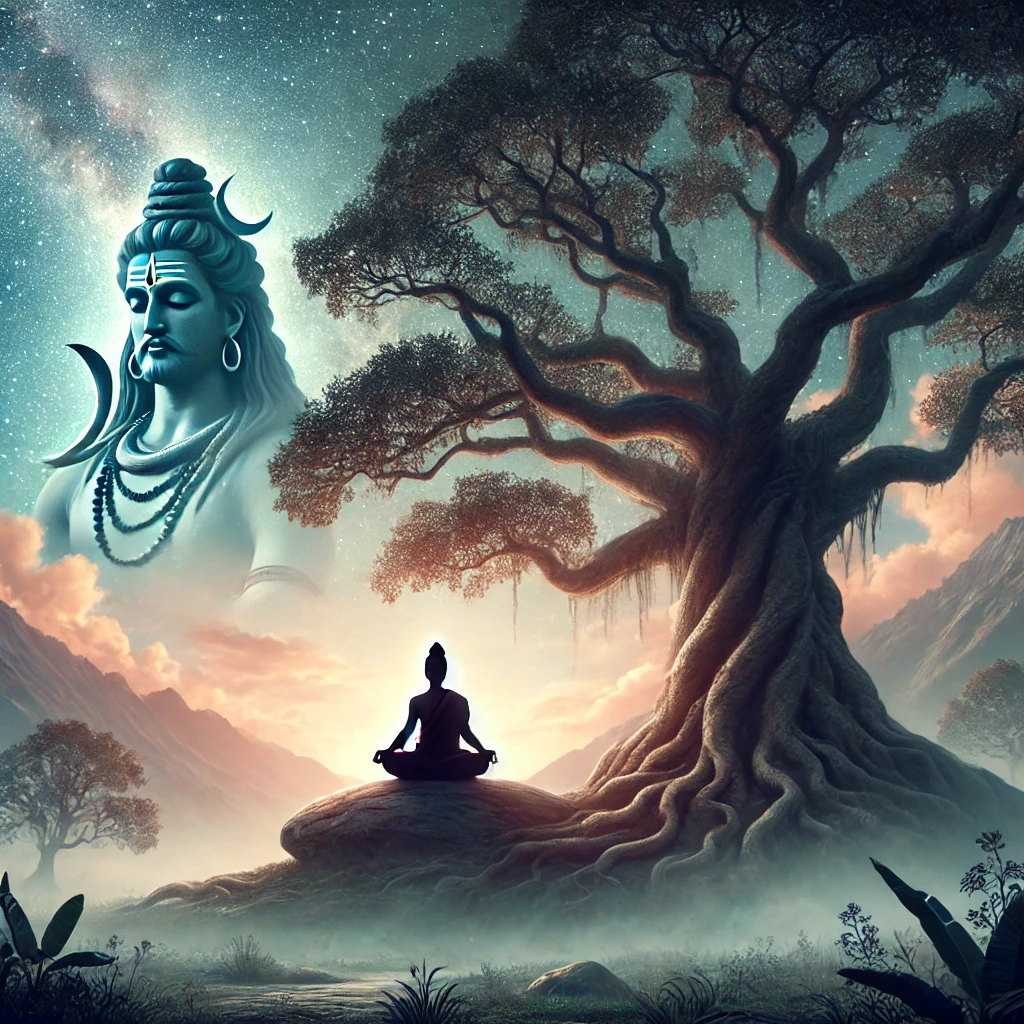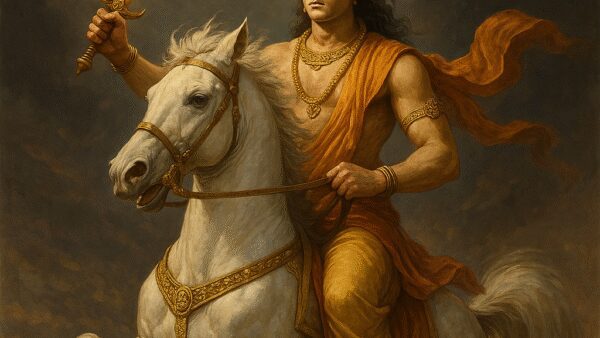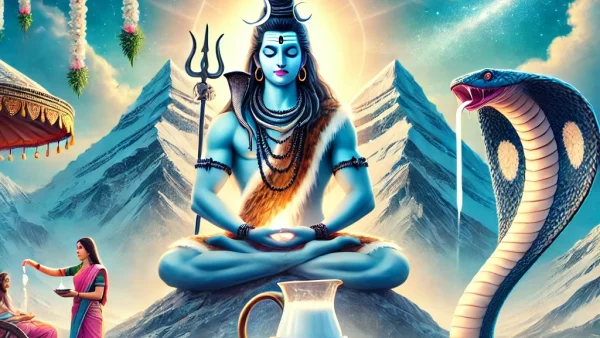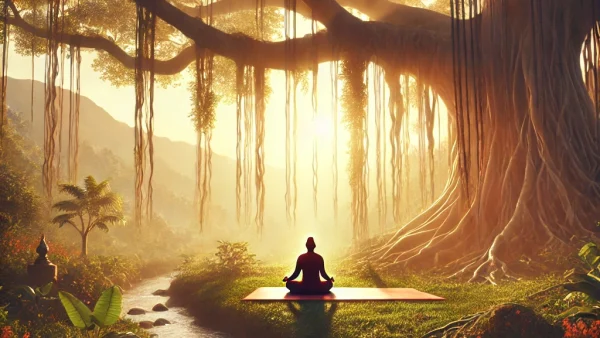Moksha, also referred to as “Moksham” in some traditions, represents the ultimate freedom, the liberation of the soul from the cycle of death and rebirth, known as samsara. This spiritual emancipation is a state where the soul is freed from worldly suffering, desire, and attachment, allowing it to unite with the divine essence, often associated with Shiva, the lord of transformation and destruction. But what exactly does Moksha entail? Why is it so revered in Hindu philosophy, and how can individuals pursue this path of liberation?
This blog will explore the depths of Moksha, its significance in Hinduism, the philosophical underpinnings that define it, and the practical pathways toward achieving this state of ultimate freedom.
What is Moksha?
Moksha is a Sanskrit word that literally translates to “liberation” or “release.” In Hinduism, it is the ultimate spiritual goal, where the soul (Atman) is freed from the karmic cycle of birth, death, and rebirth. This concept is not unique to Hinduism; similar notions of liberation exist in Buddhism (Nirvana) and Jainism, but Hinduism’s perspective of Moksha is deeply tied to the soul’s eternal relationship with the Brahman, the ultimate, formless reality.
Imagine a bird trapped in a golden cage. The bird is beautiful, and the cage is ornate, but freedom cannot be found in its confines. Moksha is akin to the door of that cage opening, allowing the bird to soar into the limitless sky, unrestricted by worldly attachments. It is a state of pure consciousness—where the individual soul merges with the cosmic consciousness, attaining unity with Shiva, the supreme being who transcends time, space, and matter.
Cycle of Samsara: Why Moksha is Needed
To truly understand the significance of Moksha, one must grasp the concept of samsara, the endless cycle of birth, death, and rebirth. Every soul, according to Hindu belief, is bound by samsara due to the accumulation of karma—the moral law of cause and effect. Every action, good or bad, leaves an imprint on the soul, and it is through countless lifetimes that the soul experiences pleasure, pain, suffering, and joy, based on its actions.
While many believe that rebirth offers the soul multiple chances to evolve spiritually, this cycle can also be viewed as a form of bondage. The soul is constantly drawn back into the material world, enticed by desires and attachments. In this sense, freedom from samsara—or Moksha—becomes the ultimate goal. Achieving Moksha means the soul is no longer subjected to rebirth, and it can exist in a state of eternal bliss and unity with the divine.
Shiva and the Path to Moksha
Role of Shiva in Attaining Moksha
In Hindu tradition, Shiva holds a special place as both the destroyer of ignorance and the protector of the soul’s spiritual journey. For devotees of Shiva, he is the key to attaining Moksha. Unlike other deities who represent prosperity or protection, Shiva embodies detachment and asceticism, qualities essential for those seeking liberation. Shiva, often seen meditating in deep contemplation on Mount Kailash, symbolizes the stillness of mind and the transcendence of worldly distractions—both necessary to escape the cycle of samsara.
There is a famous anecdote from ancient Hindu texts that illustrates the power of devotion to Shiva in attaining Moksha. The story goes that a great sage, Markandeya, was destined to die at the age of 16. In his final moments, he clung to a Shiva Lingam and prayed fervently to Lord Shiva for protection. Shiva, moved by his devotion, appeared and vanquished Yama, the god of death, granting Markandeya eternal life. This legend highlights the belief that devotion to Shiva, paired with righteous living, can lead to freedom from death itself—Moksha.
The Four Paths to Moksha
Hinduism teaches that there are multiple paths one can take to reach Moksha, each suited to different temperaments and life circumstances. These paths are collectively called yogas, which means “union” with the divine.
1. Jnana Yoga: The Path of Knowledge
This path emphasizes self-realization through the understanding of one’s true nature and the nature of reality. Practitioners of Jnana Yoga seek to distinguish the eternal soul (Atman) from the temporary, material world. Through deep meditation and intellectual inquiry, they strive to recognize the illusion (Maya) that binds them to samsara.
2. Bhakti Yoga: The Path of Devotion
For those driven by love and devotion, Bhakti Yoga offers a path to Moksha through a deep, personal relationship with the divine. Bhakti Yogis express their love for a personal deity—whether Shiva, Vishnu, or another form of the divine—through prayers, rituals, and acts of selfless service. This devotion helps them transcend ego and attachment, ultimately leading to liberation.
3. Karma Yoga: The Path of Selfless Action
Karma Yoga emphasizes performing one’s duty without attachment to the results. By engaging in selfless actions, individuals can free themselves from the bonds of karma, which fuels the cycle of rebirth. This path teaches that one should act out of love and duty, not for personal gain, and by doing so, the soul is purified and moves closer to Moksha.
4. Raja Yoga: The Path of Meditation
Raja Yoga focuses on discipline of the mind and body through meditation and ethical living. By stilling the mind and controlling one’s thoughts and emotions, the practitioner can achieve a higher state of consciousness, ultimately realizing their oneness with Brahman and attaining Moksha.
Death and Rebirth: The Role of Karma in Moksha
One of the most commonly asked questions is: how does one’s life, or rather how they live their life, impact their chances of attaining Moksha?
Karma: The Law That Governs Samsara
In Hindu philosophy, karma—the cumulative results of one’s actions, both good and bad—determines the soul’s journey through samsara. Every action, intention, and thought creates karma, which influences future experiences. If a person accumulates positive karma through righteous living, they may be reborn into favorable circumstances, or even transcend rebirth altogether, moving closer to Moksha.
However, negative karma binds the soul to the material world, leading to further rebirths in which one must face the consequences of their actions. This is why the path to Moksha requires not only spiritual knowledge but also a life of moral integrity and detachment from worldly desires.
Real-Life Examples of Moksha Seekers
Throughout history, countless saints, sages, and ordinary individuals have dedicated their lives to the pursuit of Moksha. One well-known example is Ramana Maharshi, a revered Indian sage who attained self-realization at a young age. Through deep meditation and introspection, he realized that the “I” he had always identified with was not his true self, but merely a reflection of his ego. This realization allowed him to experience the eternal, unchanging consciousness that exists beyond birth and death.
In more recent times, spiritual leaders like Sri Ramakrishna and Paramahansa Yogananda have inspired millions to seek Moksha through devotion, meditation, and selfless service.
Conclusion: Moksha—The Liberation That Awaits
For those who follow the path of Hinduism, Moksha represents the highest state of being, the ultimate freedom from the cycle of death and rebirth. It is a state of eternal peace, where the soul merges with the divine, free from the suffering and limitations of the material world. Whether through devotion to Shiva, selfless action, knowledge, or meditation, the pursuit of Moksha is a deeply personal journey that requires dedication, self-discipline, and spiritual insight.
If you’re looking to deepen your spiritual journey, you can explore the spiritual accessories like Rudraksha and Mala beads to aid your meditation and devotion at spiritualguru.lk. These sacred tools may serve as reminders of the ultimate goal: to achieve freedom and unite with the divine essence.







Pingback: What is Karma? Cosmic Law of Cause and Effect - Spiritual Guru
Pingback: Who is Pattinathar Siddhar? - Dharma Pulse
Pingback: What Does Sadhana Mean? - Spiritual Guru